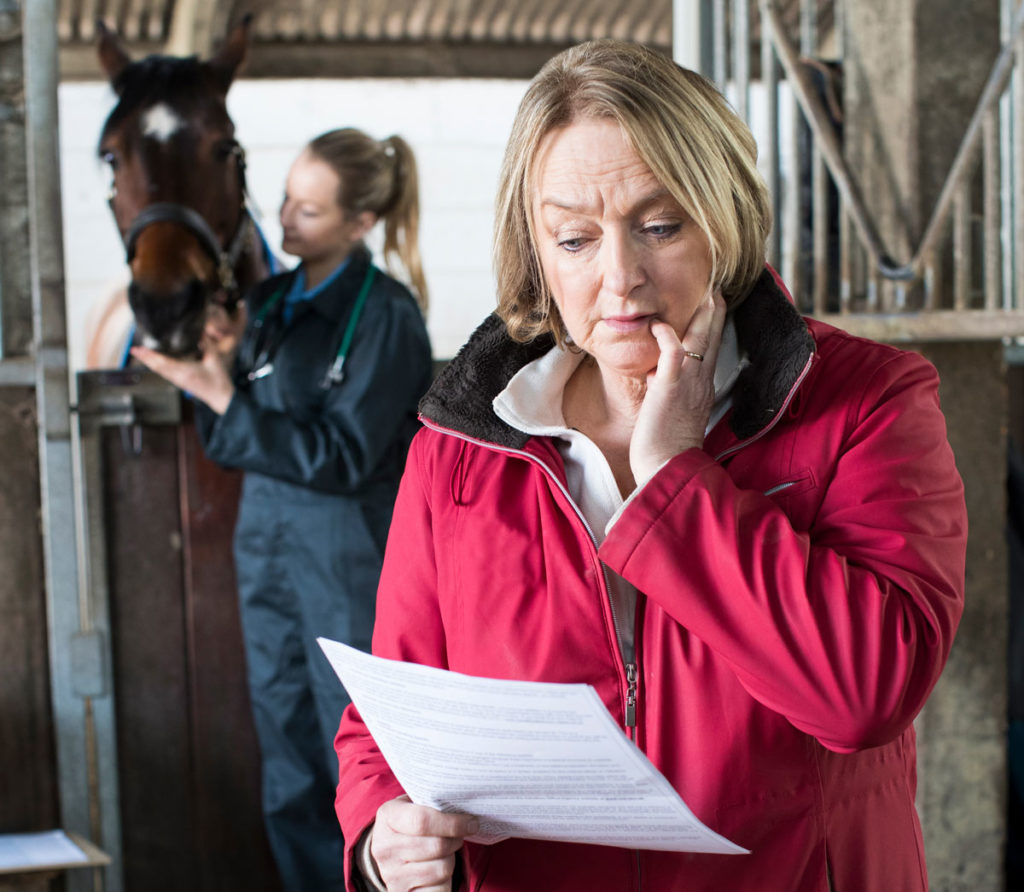
What is malpractice? “Let’s look at the definition of a veterinarian as a professional,” said Nina Mouledous, DVM, a Trust Veterinarian for the AVMA Trust. “By the virtue of the license granted, they are presumed to possess at least ordinary skills, knowledge and confidence. It’s basically the definition of a professional. On the flip side, the definition of not acting as a professional—or malpractice—would be the failure of a veterinarian to use such reasonable skill and diligence as are ordinarily expected of a careful, skillful and trustworthy veterinarian.”
Mouledous reminded the audience that we live in a litigious society. The U.S. has about 95% of the world’s lawsuits. In the US, about 5% of the population is responsible for 95% of lawsuits.
Tips on Avoiding Pre-Purchase Claims
The reason pre-purchase exams can result in malpractice claims is because they usually involved high-value horses. Pre-purchase malpractice claims also generally result in higher payouts than other types of malpractice claims.
“If you know a complaint is coming, you can get the trust involved early,” said Mouledous. “Don’t let it scare you, but don’t try to take care of it on your own. You don’t want to get huffy or angry [with the client}, and you don’t want to provoke them.
“Your feelings get hurt, but that is why you have insurance,” she reasoned. “ID they are damaged, then let’s work as a team to come to a reasonable solution.”
She noted that the most common cause of a pre-purchase claim is missed radiographic lesions.
“I would probably send radiographs to a boarded vet and build that into the cost of the exam,” advised Mouledous.
She also advised that equine veterinarians avoid conflicts of interest. “That means if a vet involved in the pre-purchase exam has a relationship with the seller–or anyone in the practice has a relationship—then there is a conflict of interest. You should excuse yourself. If that is not possible, you as the veterinarian should recommend the buyer get the past medical history on the horse with the seller’s consent before the exam.
“You also might need to obtain permission from the seller to disclose the horse’s history,” she noted.
Mouledous also said to make sure if the buyer declines items you recommend doing for the pre-purchase exam that you get them to sign off on those items. “You need to offer a full set of radiographs and educate the buyer on the need for those,” added Mouledous.
Another tip is to try and get an accurate age on the horse being examined. “Often veterinarians go by what the trainer says,” said Mouledous. “Try to obtain an age with a dental arcade, but back it up with paper.”
She said the report you generate is critical and needs to be very comprehensive. “Longer is better,” she noted. “Check off all the body parts. Look for scars, especially of previous colic surgery.”
She also recommended veterinarians suggest the buyer obtain blood tests and genetic testing. And don’t forget an ophthalmic exam.
If the buyer is not present, also make sure to give the correct height of the horse. That can be critical to some buyers. Also, if the buyer isn’t present, consider having the buyer be there via live video (i.e., Facebook live or FaceTime) while you are doing the exam. “There is so much we can do with technology,” noted Mouledous.
She said equine veterinarians can try to have buyers sign off on a liability release form for pre-purchase exams. “We know they can still come back {and sue}, but it makes the buyer think.”
Mouledous said she has seen pre-purchase exam malpractice claims be filed two to three years after the exam.
Other Resources
And just a note that Dr. Mouledous gave a comprehensive presentation on prepurchase exams equine malpractice claims at the 2021 AAEP Convention. You can read a summary of that presentation on EquiManagement.com by searching for the title “From AAEP Convention 2021: Preventing PLIT Claims for Equine Prepurchase Exams.”
She also provided a link to this downloadable PDF on “General Tips on Avoiding Pre-Purchase Exam Complaints and Allegations of Malpractice.”
You also can read an article on EquiManagement.com written from Mouledous’ talk at the 2021 AAEP Convention on this topic.

Disclaimer: This content is subject to change without notice and offered for informational use only. You are urged to consult with your individual business, financial, legal, tax and/or other advisors with respect to any information presented. Synchrony and any of its affiliates, including CareCredit (collectively, “Synchrony”), make no representations or warranties regarding this content and accept no liability for any loss or harm arising from the use of the information provided. All statements and opinions in this article are the sole opinions of the author and roundtable participants. Your receipt of this material constitutes your acceptance of these terms and conditions.








